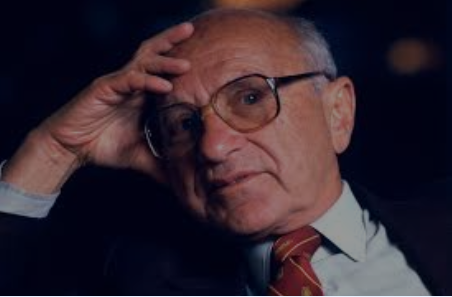
“School choice is a political hobby of the rich.”
So goes a common indictment of the effort to subsidize parents’ preference of a specific school for their own child. Sadly, there has been a wee dash of truth to the charge.
The modern movement for choice did not originate in a widespread concern for the low-income family. It was born, rather, in the intellectual hot house of the free market missionary Milton Friedman. The professor of economics saw the flabbiness of our systems of protected “free” public schools available to all families living in each defined neighborhood. Competition from tuition-based private schools was, for most parents, reduced to near zero.
The public school monopoly is grossly inefficient. The obvious solution: Offer the parents a “voucher” for tuition at the school of their choice. Let the market decide which schools survive and prosper, thus lifting the quality of the entire system. More, competition would diminish every state’s investment in school bureaucracy, reducing the load on the taxpayer.
That message sounded good to free market minds, especially those who had already experienced success in business. Thus, in the 1970s, conservative money began to settle upon these new organizations formed to bring Friedman’s ideal into political realty. The problem with the concept soon became apparent. It proved to be very hard for most Americans to embrace a completely free market of the Friedman design.
Buying a seat in a school is not like purchasing tomatoes. Whatever the good intentions of these now well-financed activists and their corporate supporters, there seemed to many citizens a disregard for an obvious need to design the new order with specific concern for lower-income families.
For example, parents who had long been financially unable to choose would, for some time, need a system of information guaranteeing a minimum of sophistication as they are introduced to this new responsibility and opportunity. Participating private schools would also be asked to comply with an admissions routine ensuring some places for the poor. In addition, the vouchers would need to be accepted as full tuition (or nearly so) from such families.
Proposals for such lightly regulated systems proved threatening to Friedman himself, his intellectual descendants, and most of the wealthy donors to pro-choice non-profits. Thus, the cheerleaders for the idea of a subsidized choice that is focused upon the lower-income family have had to make do with comparatively feeble political resources.
One consequence: Critics like the teacher unions have been encouraged to portray the concept as precisely what it need not be – another government bonus for the well off.
So, hail to the market, but empower us all to choose and encourage the schools to play fairly with those among us who will most treasure this new responsibility to our children. Choice need not be either left nor right, but at the center.
I think I see signs of hope.


